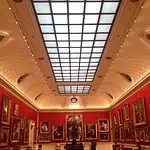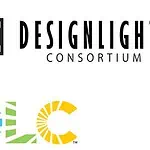You must have invested a decent sum into making your office a productive space by purchasing necessary supplies, furniture, and more. However, the office environment will always need help to enhance productivity. You see, the purpose of lighting in an office goes beyond merely illuminating specific spaces. It affects the mood of employees, which is a crucial element when it comes to improving the efficiency of the workplace. You cannot expect employees to improve their performance when constantly feeling down.
If you are wondering how vital appropriate lighting is for an office and what it takes to perfect it, you are at the right place. This article will explain everything there is to know about office lighting.
Importance of Office Lighting
Offices are spaces where you want to get the work done. Whether you are self-employed or have hired other personnel, the purpose of an office is to provide a favorable working environment. Dull lighting in an office will not just impact the utility of the space but also make you feel drowsy. You see, light fixtures have specific characteristics which determine their uses. We will come down to them in detail later on, but right now, you need to know that going wrong with either of these features can impact the performance of employees.
For example, if the color temperature of the light is low, it will make the workers feel drowsy all the time. Similarly, if the intensity of the light is too high, it will lead to fatigue owing to strains.
Hence, while designing an office space, paying as much attention to lighting as other elements, such as the interior and furniture, is important.
Types of Office Lighting
Lighting in an office can be divided into four broad categories, which include:
1. Ambient Lighting
Ambient light is the primary source of light in a space. You can create it by employing large fixtures with the appropriate color, temperature, intensity, and CRI. The purpose of ambient light is to bring utility to a particular space. While creating ambient light in an office, ensure it does not strain the eye.
2. Task Lighting
As the name suggests, task lights serve a specific purpose which is to provide adequate illumination for a particular task. For example, office spaces may exist where employees must read and write from papers. Using task lights above those desks can make the area more productive.
3. Accent Lighting
Accent lighting accentuates a specific area or an object in the office. You can use it on notice boards to bring employees’ attention.
4. Decorative Lighting
Decorating lighting, again, as is evident by the name, is used to bring life to a place. You can use such lighting to design a workplace where employees feel motivated to come. Furthermore, you can also use it in areas like canteens to create a different environment from the rest of the office. Doing that will ensure employees do not feel at work during break times.
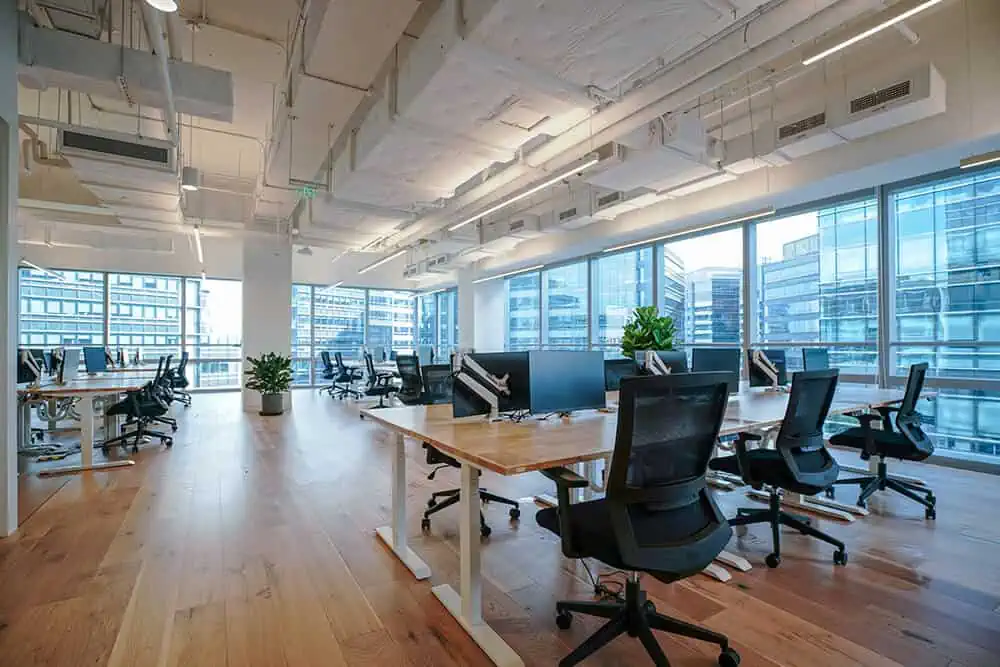
Factors To Consider When Choosing Office Lighting
Now that you are familiar with the importance and types of lighting, let’s look at some factors that must be considered in the process.
1. Types of Lights
While lighting an office, you will find several lighting solutions, including Halogen Bulbs, Incandescent Bulbs, and LEDs. You should always go for LEDs not just because they are cost-effective but they are also most flexible. The market offers all LEDs in all shapes and sizes, which will help reproduce the design you conceived.
For information, you can read
Advantages and Disadvantages of LED Lighting
Halogen vs. LED Bulbs: How To Choose?
2. Light Intensity
Light intensity or brightness is a critical factor because it ensures the utility of a place. You should neither go too bright nor too dull. The intensity of the light is measured in lumens, and while different spaces have varying requirements, 40 lumens per square is recommended for most offices.
For more information, you can read Candela vs Lux vs Lumens.
3. Color Temperature
Color temperature represents the color emitted by a fixture on a spectrum. It is measured on Kelvin Scale, which ranges between 1,000 to 10,000K. Lights under 4000K are considered warm lights because they emit a yellowish color. In contrast, lights with more than 4000K emit cool white lights.
It is a crucial consideration because it determines the mood of employees—lights below 4,000K trigger melatonin production in human bodies, a hormone responsible for inducing sleep. Hence, the workers will feel drowsy at all times. Thus, while designing office lights, always go for temperatures equal to or more than 4,000K.
For information, you can read Best Color Temperature for LED Office Lighting.
4. Color Rendering Index
Color Rendering Index is another important parameter that indicates how accurately artificial lights can render the colors of objects compared to natural lights. It is measured on a scale from 1 to 100; the closer it is to 100, the better color a light can render.
That said, you do not always have to render the natural color. Some parts of your interior may look better with a lower CRI. You must remember and use the concept creatively while designing an office’s lighting.
5. Glare Reduction
Exposure to glare leads to eye strains and long-term medical conditions, which makes its reduction very important in office spaces. You cannot expect the employees to deliver when experiencing chronic fatigue. It is even more critical when much work must be done on screens. You have reduced the glare coming from screens by optimizing the ambient light around them.
As for the light fixtures, several anti-glare solutions can be procured from the market.
For more information, you can read What is Anti-Glare Light and How To Reduce Light Glare?
6. Energy Efficiency
It takes multiple lights to illuminate the office effectively, which means they consume a significant portion of your energy. In order to reduce overhead charges, you will have to use energy-efficient LEDs. Otherwise, more energy bills alone will be needed to manage.
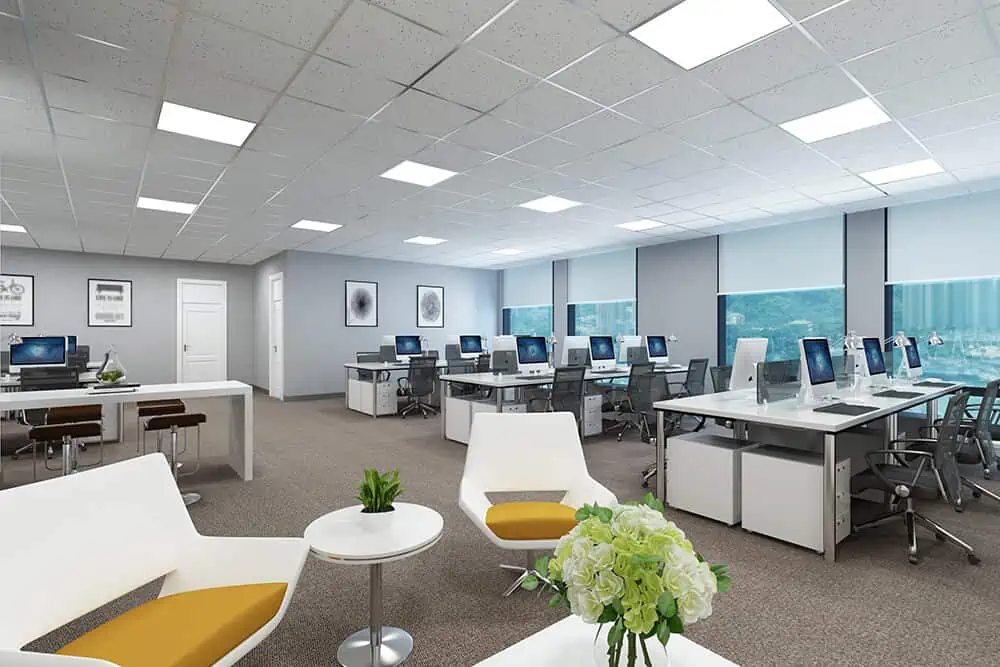
Benefits of Good Office Lighting
Lighting an office adequately will offer several benefits, some of which are the following:
1. Increased Productivity
Appropriate lighting creates a favorable working atmosphere where employees feel motivated to work. It leads to increased productivity followed by a boost in overall profits.
2. Reduced Eye Strains
Eye strain is a common problem that employees encounter in workplaces. Ensuring good light prevents chronic fatigue and makes the workers feel comfortable. Hence, it will drive the productivity and efficiency of the employees.
3. Improved Mood and Well-Being
As discussed earlier, light plays a pivotal role in determining people’s mood in any given environment. With adequate light, the employees will feel mood improvements, leading to better performance and productivity.
4. Enhanced Safety and Security
There are specific hazards in every workplace that can be minimized by adequate lighting. You can use task lights in areas prone to accidents to minimize their incidences.
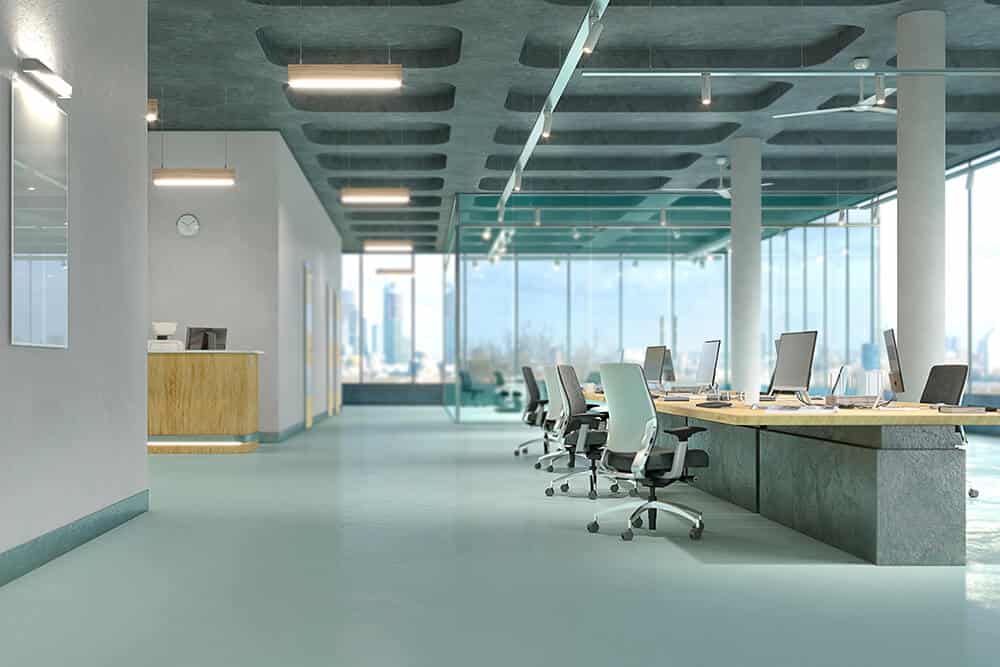
Tips For Designing Office Lighting
You should be familiar with the basics of office lighting by now. While we recommend hiring a professional to light an office, sometimes it is impossible. So, if you have decided to light the office by yourself, the following tips will help:
Determine Lighting Need
The first thing you must do is determine how much light each area within the office needs. You will notice that different regions have varying requirements. For example, the area where most of the work is carried out on laptops or desktops will need higher brightness to reduce the glare coming from screens. However, it might need to be revised in areas where people must read and write on paper.
Plan Lighting Layout
After determining the lighting requirements of different areas, you should design a layout to meet them. You should know where to install ambient lights and which places will look the best with accent and task lights. While designing the layout, ensure the fixtures’ beams do not overlap. Also, make sure that all areas receive optimal light.
Choose Lighting Fixtures
The market offers various types of fixtures that have varying applications. You should pick the ones that go with the layout you have planned. The fixture choice should be based on the area, the height of the ceiling, and the overall layout of the area.
Combine Different Types of Lighting
Using a single type of lights can make an area look monotonous and boring. You can bring life to the place by using different types of lights.
Optimize Natural Light
Optimizing natural light is one of the most important factors while lighting an office. There is no alternative to it, making using natural light’s complete advantage vital. Use natural light as ambient light where possible and design the rest of the layout around it. It will improve the productivity and overall well-being of the employees.

FAQs
You should use a higher color temperature, preferably over 4,000, for office lighting to keep the employees alert and improve their productivity.
Blue light, emitted by higher color temperatures, prevents the production of melatonin, a sleep-inducing hormone, in human bodies and keeps them alert. Hence, lights with higher color temperatures are the best for productivity.
Ambient, task, accent, and decorative lighting are the important types of lights for the workplace. Each lighting type has its unique application and should be used accordingly.
The basic qualities of good lighting include color, direction, intensity, form, and movement.
LEDs are highly energy-efficient, last longer, and offer the flexibility to design a perfect lighting environment. You should pick LEDs to reduce your energy bills and maintenance charges. While these lights cost higher upfront, the amount they save on energy makes them worth it.
The exact number of lumen depends on the height of the ceiling, the layout of the office, and a couple of other factors. However, on average, an office space needs about 40 lumens per square foot.
Office lighting is essential for creating a comfortable and productive workspace. Proper lighting can reduce eye strain, prevent headaches, and enhance mood and well-being. It can also improve productivity by reducing errors and increasing accuracy.
There are three primary types of office lighting: ambient lighting, task lighting, and accent lighting. Ambient lighting provides general illumination to the entire space, while task lighting is focused on specific work areas. Accent lighting is used to highlight certain features or objects in the workspace.
The ideal brightness level for office lighting depends on the type of work being performed. Generally, ambient lighting should be between 300-500 lux, while task lighting should be between 500-1000 lux.
The color temperature of office lighting should be around 5000-6500 Kelvin. This range provides a bright, cool light that mimics natural daylight and helps maintain a focused, alert state.
To reduce glare from office lighting, use indirect lighting sources or adjust the angle of the lighting fixtures. You can also use anti-glare screens on computers or position them away from windows to avoid direct sunlight.
To maximize natural light in the office, position workstations close to windows and use light-colored or reflective surfaces to reflect natural light throughout the space. You can also use light-filtering window treatments to diffuse the light and reduce glare.
The best lighting for computer work is indirect lighting that doesn’t create a glare on the screen. Task lighting should be used to provide additional brightness for reading and writing.
To create a comfortable lighting environment in an open office space, use a combination of ambient lighting, task lighting, and accent lighting. Provide multiple lighting sources to accommodate different work needs, and allow for individual lighting adjustments to reduce eye strain and increase productivity.
To make office lighting more energy-efficient, use LED lighting fixtures that are long-lasting and use less energy than traditional fluorescent bulbs. You can also use motion sensors or timers to turn off lights when they’re not in use.
Yes, lighting can affect employee productivity. Poor lighting can cause eye strain, headaches, and fatigue, which can decrease productivity. On the other hand, good lighting can increase alertness, reduce errors, and enhance overall well-being, leading to increased productivity.

Conclusion
Lighting is a vital element of office design, which you always pay attention to. It plays a key role in improving employees’ productivity and offering them a favorable working environment. A lot of thought and planning should go into office lighting. You should pick the right lighting solution and types of lights and provide adequate lighting to all areas.
LEDYi manufactures high-quality LED strips and LED neon flex. All of our products go through high-tech laboratories to ensure the utmost quality. Besides, we offer customizable options on our LED strips and neon flex. So, for premium LED strip and LED neon flex, contact LEDYi ASAP!
